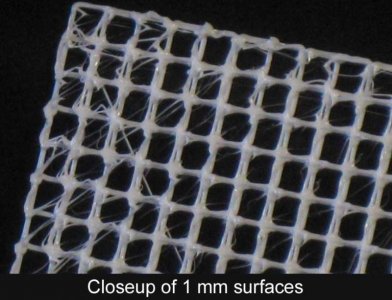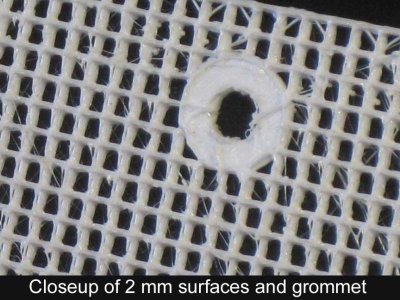Floyd R Turbo
Either busy or sleeping
So, I read nearly everything, especially the big changes parts. It doesn't say how many 1 watt leds you need for a 12 square inch screen. It says one 3 watt on each side for every 12 square inches. So, is the assumption it takes 3 1 watts on each side for every 12 square inches?
Can anyone point me in the direction of a good 1 watt or 3 watt fixture for say a 3 cube screen?
The link below is a fixture with 24x1 watt leds on a 7"x5" mounting plate. Way more light than what I believe is recommended. Can this light be used for an algae scrubber or is there a better one on the market?
http://www.ebay.com/itm/24W-Red-660...211306?hash=item3ab32d91ea:g:5SgAAOSw0HVWEqH7
Post 6884 (also in sig) is updated LED guideline. I can't go back and edit the "basics" post, which is why I keep it updated in my signature per the post.
*** This is current as of 2015-05-15! ***
----------------
Here is my recommendation for LED lighting of a waterfall algae scrubber screen:
This is for a double-sided screen using Philips Luxeon ES 3W Deep Red 660nm LEDs without lenses (120-140 degree) running at 700mA at 2-3" from the screen to LED
Minimum coverage: One LED on each side of every 8 sq in of screen
Maximum coverage: One LED on each side of every 4 sq in of screen
Simple as that. For new screens (bare) if using the "Maximum" level, run at 350mA until mature, or use a diffuser. Might have to do this with the Minimum level also actually, but not typically. The minimum could probably be stretched to a larger area but screen will cure slower and generally have less capacity.
So for a 6x6 screen, which is 36 sq in, /8 = 4.5 per side. Make it 5.
So for a 6x6 screen, which is 36 sq in, /4 = 9 per side.
Supplementing with blue/violet: Always run blues at 350mA, violets can be run higher but should follow the same rule for the maturing stage (350 at first, then increase after maturing). Use one to two at this current level for every 5-6 reds, roughly. Lots of flexibility here, a little blue/violet goes a long way. I've used 440-445nm Royal Blue Luxeon ESs for this, but I know of at least one other that used to use RBs and switched to Deep Violets and almost doubled growth. Steve's LEDs now carries a good Hyper Violet made by SemiLED.
Regarding non DIY-LEDs in general, this is what I have roughed out to help with this.
The issue is that my DIY LED guideline is based on coverage. You can't say "I need 5 3W LEDs which is 15W, so a 15 W fixture is what I need". It doesn't work that way.
That's because a 3W LED does not necessarily consume 3W, and a purchased LED may rate it's intensity based on actual wattage used, or it may add up the LEDs and give a wattage but the actual watt draw is less. You have to watch for this.
A 3W Philips Luxeon ES 660nm LED will typically drop 2.2v across the LED at 700mA. Power = Amps * Volts so 2.2 V * 0.700 A = 1.54W. What? I thought it was a 3W. It is. That is something called MARKETING. LEDs have become more efficient over time as they have been redesigned, so a lower Vdrop and Idrive results in the same output, but instead of calling it a 1.5W and confusing everyone, they call it a 3W still.
So now on to your fixture you are looking at.
Converting the "LED per unit area guideline" to a "wattage" guideline is as simple as doing the math.
Figure out what you need per the "unit area" guideline. In the above example, 6x6 screen, minimum level (low intensity), 5x 3W per side. Each is actually drawing 1.5W, so 5x1.5 = 7.5W. Your light fixture should actually consume, at the wall, a minimum of 7.5W. The electronics built into the fixture will draw power also, meaning that you might want to add a little cushion to the number. So a 10W fixture on a 6x6 screen would be about right for a comparable replacement to an array of 5x 3W LEDs.
Now let's add that factor in and parallel it to screen size. A 6x6 screen = 36 sq in. Make it 40. you need a 10W actual-draw LED fixture on each side of this. So you could say that the rule of thumb for a pre-built LED fixture is that you need 0.25W per square inch of screen. That would get you into the Minimum light arena - or "Minimum Intensity", and you need one of these on each side of the screen.
Doubling that would put you on the higher end. 0.5W per square inch - actual wattage draw of fixture.
What you have to watch for is when they use a multi-chip that has 9 1W LEDs on it and they call that 10W. Not necessarily true. But 1W LEDs are actually more efficient than 3W LEDs when you are talking radiant flux output per unit of energy input into the LED, so it's not horrible, just shoot for the higher light level and you'll be OK usually. At best, you will actually be at the minimum level. At worst, you'll be on the low side but still OK.


